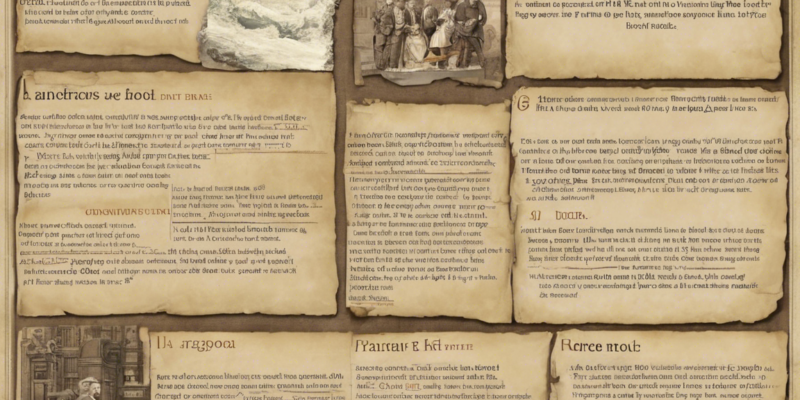Ancient Rome stands as one of the most influential civilizations in human history, leaving a lasting impact on art, architecture, government, and culture. From the founding of the city in 753 BC to the fall of the Western Roman Empire in 476 AD, Rome went through significant transformations that shaped the world we live in today. In this article, we will delve into the rich history of Ancient Rome, exploring its rise to power, key contributions to society, and ultimately, its decline.
The Rise of Ancient Rome
Ancient Rome started as a small village on the banks of the Tiber River in Italy. Romulus and Remus, twin brothers in Roman mythology, were said to have been raised by a she-wolf and later founded the city. The Romans established a republic in 509 BC, a form of government in which elected officials represented the people.
As Rome expanded its territory through military conquests, it came into conflict with other civilizations such as the Carthaginians and the Greeks. The Punic Wars against Carthage, led by the famous general Hannibal, solidified Roman dominance in the Mediterranean.
By 27 BC, Rome had transitioned from a republic to an empire, with Augustus becoming the first Emperor of Rome. The Pax Romana, a period of relative peace and stability, allowed for prosperity and the flourishing of arts and culture.
Key Aspects of Ancient Roman Society
1. Government and Law
The Roman Republic influenced modern democratic systems with its concept of checks and balances. The Roman Senate, composed of wealthy landowners, advised magistrates and passed laws. Roman law, codified in the Twelve Tables, formed the basis of legal systems in many countries.
2. Engineering and Architecture
Romans were master builders, creating structures such as the Colosseum, aqueducts, roads, and bridges that still stand today. Their use of concrete revolutionized construction techniques and enabled the building of durable, large-scale projects.
3. Art and Literature
Roman art drew inspiration from Greek traditions but developed its style, seen in sculptures, mosaics, and frescoes. Influential writers like Virgil, Cicero, and Ovid produced works that laid the foundation for Western literature.
4. Religion and Mythology
The Romans worshipped a pantheon of gods and goddesses, with Jupiter, Mars, and Venus among the most revered. Their mythology, intertwined with Greek myths, provided explanations for natural phenomena and human behavior.
The Decline and Fall of Ancient Rome
Despite its achievements, Ancient Rome faced internal strife and external threats that led to its eventual decline. Factors contributing to the fall of the Roman Empire include:
- Barbarian Invasions: Germanic tribes such as the Visigoths and Vandals invaded Roman territories, weakening the empire’s defenses.
- Economic Instability: Heavy taxation, inflation, and reliance on slave labor strained the economy, leading to social unrest.
- Political Corruption: Emperors became increasingly tyrannical, and power struggles within the imperial family destabilized the government.
- Military Challenges: Constant warfare depleted resources and stretched the military thin, making it difficult to defend the empire’s vast borders.
In 476 AD, the last Roman emperor in the West, Romulus Augustulus, was deposed by the Germanic chieftain Odoacer, marking the traditional date for the fall of the Western Roman Empire. The Eastern Roman Empire, known as the Byzantine Empire, continued to thrive for nearly a thousand years until the fall of Constantinople in 1453.
Frequently Asked Questions (FAQs)
1. What were the main social classes in Ancient Rome?
Answer: Ancient Roman society was divided into several classes, including patricians (aristocrats), plebeians (commoners), slaves, and freedmen.
2. How did Ancient Rome influence modern legal systems?
Answer: Roman law made significant contributions to modern legal principles, such as the presumption of innocence, the right to a fair trial, and the concept of civil rights.
3. What were the major accomplishments of Ancient Roman engineering?
Answer: Romans excelled in engineering by constructing aqueducts to supply water to cities, building roads like the famous Appian Way, and creating monumental structures like the Pantheon.
4. Who were some of the most famous Roman emperors?
Answer: Notable Roman emperors include Julius Caesar, Augustus, Nero, Trajan, Hadrian, and Marcus Aurelius, each leaving their mark on Roman history.
5. How did Ancient Roman religion differ from Greek mythology?
Answer: While Roman religion adopted many Greek deities and myths, it placed a greater emphasis on rituals, ceremonies, and state worship of the emperor.
In conclusion, Ancient Rome remains a captivating era of history that continues to intrigue and inspire people worldwide. Its legacy can be seen in the legal systems, languages, and cultures of modern societies. By exploring the rise, achievements, and eventual decline of Ancient Rome, we gain valuable insights into the complexities of human civilization and the enduring impact of the past on the present.


Comments